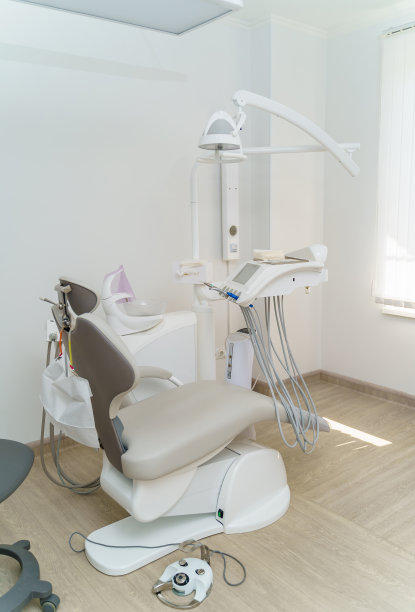Understanding Periodontal Disease Its Causes Effects and Comprehensive Treatment Approaches for a Healthier Smile
Summary: Periodontal disease, a common but often overlooked oral health issue, affects the gums and underlying tissues, leading to severe consequences if left untreated. This article delves into the multifaceted nature of periodontal disease, discussing its causes, effects, and the importance of comprehensive treatment approaches. Understanding how factors like plaque accumulation, genetic predisposition, and lifestyle choices contribute to the disease provides insight into prevention. Likewise, recognizing the potential impact on overall health highlights the urgency of addressing periodontal disease. Finally, the article outlines various treatment strategies, underscoring the need for professional dental care and patient education to achieve and maintain a healthier smile.
1. Causes of Periodontal Disease Explained

Periodontal disease primarily stems from plaque accumulation—a sticky film of bacteria that forms on teeth. When not removed through regular brushing and flossing, plaque hardens into tartar, which irritates the gums, leading to inflammation and infection. This initial stage is known as gingivitis, marked by swollen and bleeding gums. If treatment is not sought, gingivitis can progress to more severe forms of periodontal disease.
Another important factor is genetic predisposition. Studies have shown that some individuals may be more susceptible to periodontal diseases due to inherited traits affecting immune responses. These genetic factors can determine how one’s body reacts to bacterial infections in the mouth, and they significantly contribute to the severity of the disease.
Lifestyle choices also play a crucial role in the onset of periodontal disease. Smoking, poor nutrition, and inadequate dental care can weaken gum health, making it tougher for individuals to fight off infections. Furthermore, conditions such as diabetes and hormonal changes during pregnancy can exacerbate the effects of periodontal disease, making awareness and preventive measures vital for at-risk populations.
2. Effects and Consequences of Periodontal Disease
The effects of periodontal disease extend beyond the mouth, significantly affecting overall health. Research indicates a strong association between periodontal disease and systemic health issues, including heart disease and diabetes. The bacteria from periodontal infections can enter the bloodstream, potentially leading to cardiovascular complications and other serious health concerns.
Additionally, periodontal disease can result in tooth loss, which impacts not just the aesthetics of one’s smile but also functionality. Loss of teeth alters bite alignment and can lead to difficulties in eating and speaking. This change can create social anxiety and impact quality of life, sometimes leading to further psychological issues.
Chronic perio disease is also linked to respiratory diseases. Bacteria from the oral cavity may be aspirated into the lungs, resulting in conditions such as pneumonia. These interconnected health risks underscore the importance of managing periodontal disease not only as a dental issue but as a multifaceted health concern.
3. Importance of Early Diagnosis and Treatment
Early diagnosis and intervention are critical in managing periodontal disease effectively. Regular dental check-ups allow for timely identification of early signs of gum disease, enabling prompt treatment before the condition worsens. Dentists can perform scaling and root planing, which helps remove plaque and tartar and smooth the root surfaces to facilitate healing.
In addition, patient education plays an essential role in prevention and treatment. Dental professionals can guide patients on proper oral hygiene practices, helping them understand the importance of consistent brushing, flossing, and dietary choices that support gum health. This proactive approach empowers patients to take control of their oral health.
Moreover, advancements in technology have led to the development of various therapeutic treatments, such as antimicrobial mouthwashes or localized antibiotic treatments. Patients may also be introduced to non-surgical options that improve gum health, showcasing the diverse spectrum of available treatments directed towards restoring and maintaining periodontal health.
4. Comprehensive Treatment Approaches for Gum Health
Comprehensive treatment plans should be tailored to the individual needs of each patient. These plans can include a combination of professional cleanings, periodontal exams, and personalized oral hygiene programs. The ultimate goal is to reduce or eliminate periodontal pockets and restore gum health.
For patients with advanced forms of periodontal disease, surgical options may become necessary. Procedures like flap surgery or bone grafts can help regenerate lost tissue and restore jawbone health. These interventions are vital for preventing further tooth loss and preserving facial structure.
Ongoing maintenance is equally important, as periodontal disease can recur if proper care is neglected. Patients need to commit to regular dental visits for professional cleaning and follow-up care, alongside their daily oral care routines. Such dedication ensures long-lasting benefits for both oral and overall health, fostering a healthier and brighter smile.
Summary:
Understanding periodontal disease, its origins, consequences, and treatments is paramount for maintaining optimal oral health. By embracing early detection and comprehensive care, individuals can prevent severe effects and promote a healthier lifestyle. The synergy between dental hygiene practices and professional treatments accentuates the need for proactive measures.
This article is compiled by Vickong Dental and the content is for reference only


